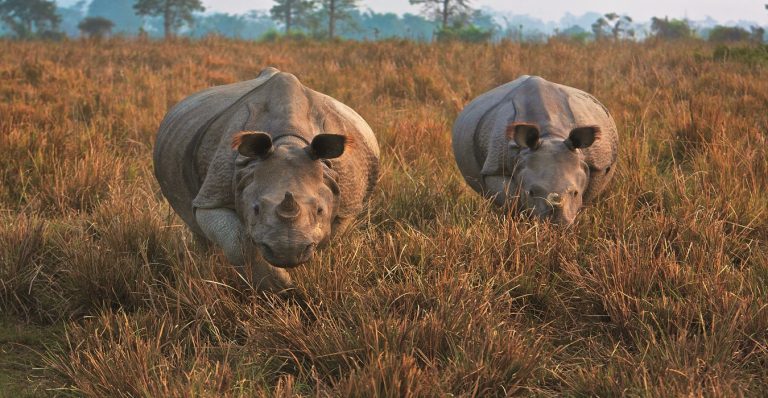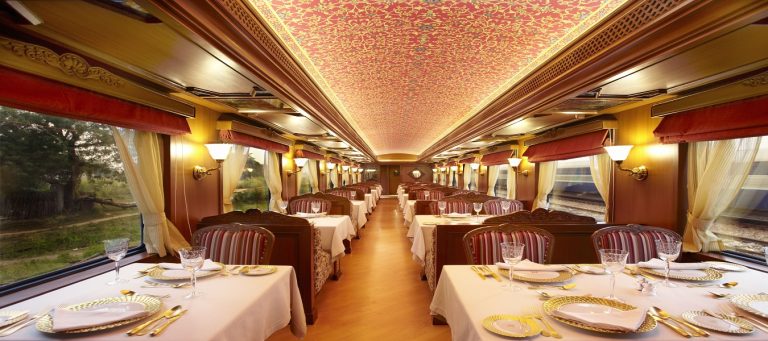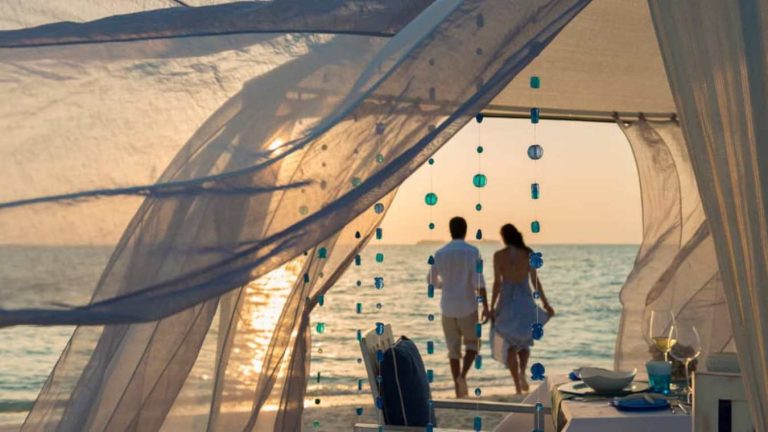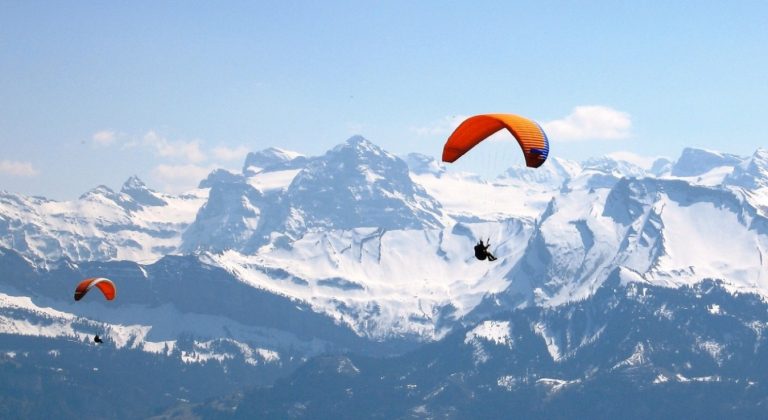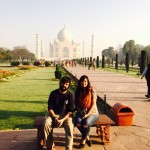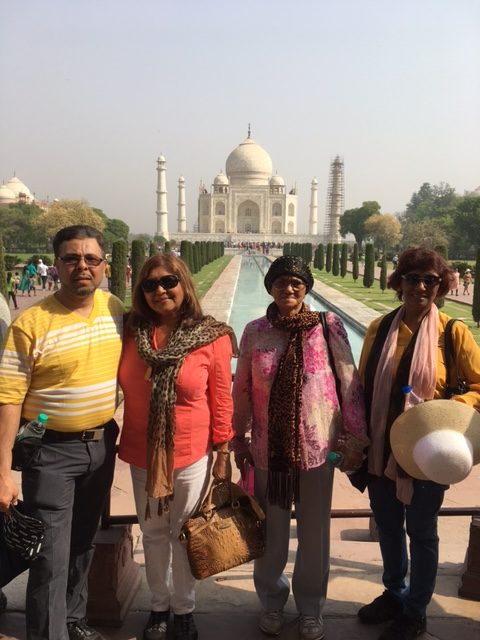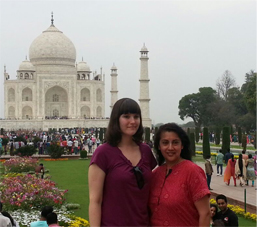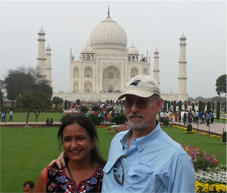Kathmandu is one of the most picturesque capitals in the world. 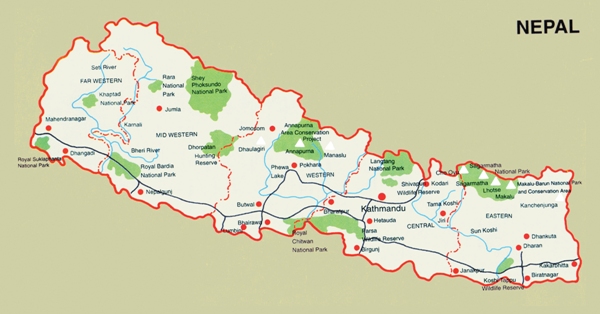 It is said to have over 2,000 temples and shrines and was developed to its present shape in AD 723 by King Gunakama Deva The word Kathmandu derives from “Kasthmandap,” a pagoda (supposed to have been made from the timber of a single tree) near Durbar Square, which was the heart and centre of the city in ancient times. The original name for the city was Kantipur The Durbar Square is still the focal point of the old city area. Here are some of the finest temples, palaces and old public buildings of the city. Hanuman Dhoka is the historic palace and temple complex. In this large compound are many different courtyards and buildings, both religious and secular Telaju Temple is a fine three-tiered temple built in the 16th century. Being the Royal Chapel, it is closed to foreigners and only opened to Nepalese once a year. Along one wall of the palace is a stone inscription in 18 languages ordered by King Pratap Malla in the 17th century. By the main entrance to the palace complex is a statue of Hanuman, the famous Monkey God who features in the Ramayana epic. In a small but exquisite courtyard is Kumari Bahal, the temple residence of the Living Goddess which is an example of Newari craftsmanship. The Living Goddess is a little girl, not more than 6-7 years old, supposed to be the incarnation of the goddess Kumari, ordained by virtue of her blemish-free body, calmness and serenity befitting divinity. Catching a glimpse of the beautiful Kumari who lives in her beautiful home, looked after by a host of Kumarimas or attendants, whenever she deigns to look down from a splendid window frame on the mass of gaping mortals, is the high point of a visit to Hanuman Dhoka. The fragile reign of Kumari comes to an end with the onset of puberty. Thereafter, the search for a successor begins, generally during the Dussehra festival.
It is said to have over 2,000 temples and shrines and was developed to its present shape in AD 723 by King Gunakama Deva The word Kathmandu derives from “Kasthmandap,” a pagoda (supposed to have been made from the timber of a single tree) near Durbar Square, which was the heart and centre of the city in ancient times. The original name for the city was Kantipur The Durbar Square is still the focal point of the old city area. Here are some of the finest temples, palaces and old public buildings of the city. Hanuman Dhoka is the historic palace and temple complex. In this large compound are many different courtyards and buildings, both religious and secular Telaju Temple is a fine three-tiered temple built in the 16th century. Being the Royal Chapel, it is closed to foreigners and only opened to Nepalese once a year. Along one wall of the palace is a stone inscription in 18 languages ordered by King Pratap Malla in the 17th century. By the main entrance to the palace complex is a statue of Hanuman, the famous Monkey God who features in the Ramayana epic. In a small but exquisite courtyard is Kumari Bahal, the temple residence of the Living Goddess which is an example of Newari craftsmanship. The Living Goddess is a little girl, not more than 6-7 years old, supposed to be the incarnation of the goddess Kumari, ordained by virtue of her blemish-free body, calmness and serenity befitting divinity. Catching a glimpse of the beautiful Kumari who lives in her beautiful home, looked after by a host of Kumarimas or attendants, whenever she deigns to look down from a splendid window frame on the mass of gaping mortals, is the high point of a visit to Hanuman Dhoka. The fragile reign of Kumari comes to an end with the onset of puberty. Thereafter, the search for a successor begins, generally during the Dussehra festival.
Patan
3 miles southwest of Kathmandu lies Patan, also known as Lalitpur Patan was once an independent Malla kingdom, its origin dating back 2,000 years. It is still the major centre for craftsmanship in Nepal and its buildings are a virtual museum in Newari artistry. Here in Patan there is a greater proportion of Buddhist art than in any of the other valley towns.Patan is the oldest of the three cities of the ancient Kathmandu Valley. Hundreds of temple edifices abound in the city. Patan’s biggest attraction is the Durbar Square (the Palace complex). The awe-inspiring majesty of the temples in the square give mute testimony to a multi-century-old civilisation of magnificence – truly the kingdom’s great heritage. The small houses lining the cobble-paved streets are the homes of skilled craftsmen whose arts have been passed from father to son. Within the Durbar Square is the Krishna Mandir, the temple of Lord Krishna, built by King Siddhi Narasingha Malla in the 16th century. The work on the edifice is considered to be the best example of the ancient Nepali artisan’s skills in creating different forms of temple craft. The temple’s frieze has been carved out to depict the significant scenes from the The four Ashoka Stupas, situated in the four corners of the city, are believed to have been built by the Buddhist monarch of ancient India, Emperor Ashoka. During the 12th century, a monarch who reigned in Patan, King Bhaskar Varma, had the Hiranya Varna Mahavihar temple constructed. This Buddhist Monastery has a superb gold-plated roof, courtyard with many prayer wheels and richly decorated three-storied temple. Another Buddhist shrine in Patan is the Mahaboudha Temple, which is a masterpiece in terracotta. Often called the “Temple of a Million Buddhas”, because of the 9,000 Buddha images carved on the bricks of the edifice, the temple was built by an ancient priest in Patan named Abhaya Raj. Located near Patan’s marketplace is the impressive temple of Machhendranath. The architecture here is also pagoda-style and the temple here houses (for 6 months of the year) the fine clay image of the Red Machhendranath.
Bhadgaon the City of Devotees, founded in AD 889 by King Ananda Deva, is also known as Bhaktapur. The sacred character of the city, 9 miles to the east of Kathmandu, is enhanced by the fact that the benevolent monarch decreed that Bhaktapur be constructed in the shape of a conch shell – an object of religious significance to Hindus and Buddhists. Until today, Bhadgaon retains its traditional character, and has pottery and weaving as its main industries in a tradition handed down the ages. Bhadgaon prospered under the successive Malla Kings until the 18th century. It is one of the three major cities of the valley to achieve great levels of art. The Durbar Square in Bhadgaon is a complex of temples in pagoda and shikara styles grouped around the palace. The golden effigies of kings and mythical figures perched on pillars and roofs, deities looking out from shrines and the rich decoration in carved and painted wood on every surface are most memorable. The Golden Gate opens the way to the courtyard of the Palace of 55 Windows. The ornately carved edifice is topped by the figure of Goddess Kali. A short distance from Durbar Square is the Nyatapola Temple built by King Bhupatindra Malla. It is one of the tallest temples and is known for its massive and exquisite workmanship.
Nagarkot – is one of the most scenic spots in the Bhadgaon district, renowned for the spectacular sunrises when the weather is clear. Visitors often travel to Nagarkot from Kathmandu for the night so that they can observe the breathtaking dawn. It is the best spot to view Sagarmatha (Mount Everest) as well as other snow-topped peaks of the Himalayan Range in eastern Nepal. It also offers an excellent view of the Indravati Valley which lies to its east. The beauty of Nagarkot endures all year round with a harmonious blending of the changing scenery. In the spring, the valleys and dales in the surrounding area break out in a riot of kaleidoscopic colours of flowers that bloom in the thousands. The flowers stand in stark beauty against the serene backdrop of the snow-covered mountains in the horizon. Nagarkot is considered one of the best bases for medium duration treks.
Swayambunath
Set high on a hill overlooking the valley, Swayambunath is haunting. Stone steps that have been polished by the bare feet of devotees lead to the stupa which is the oldest (2,500 years) and the highest point in Kathmandu. Stone tablets, similar to those of Babylon, lend an eerie feeling to the atmosphere. Time, it seems, has frozen. Tall and spreading trees have been growing here for a long time. Stone lions, monkeys, greenery, large rocks and white clouds make it an enchanting place. The row of chaityas between the steps correlate with the steps, the rocks and the solitude The main shrine shaped like a chorten, is a fusion of mandala, chaitya and the shikara styles of architecture. Steps lead up to the dome which represents the five elements – earth, water, wind, fire and ether. The conical spire of circles reaches up to the golden umbrella shaped crown. Trails of coloured prayer flags wave to the azure sky and the quilt of light and darkness that is the valley below. Old and young circuit the stupa spinning the prayer wheels The atmosphere is one of peace and serenity
Pashupatinath- The most sacred of the Shiva shrines in Nepal is the Pashupatinath Temple built on the west bank of the holy Bagmati River. Dedicated to Lord Pashupatinath, the Guardian Deity of Nepal, the temple is a twin-roofed pagoda of gold-gilt-brass. The gateways of the temple have been silver plated. Enshrined within the temple is the lingam of Lord Pashupatinath. The holiest of the spots within the temple complex is dominated by a huge gilt figure of the Nandi (bull), the mount of Shiva, seated on a stone pedestal. By the side of the image of Nandi is the sacred Trident of Lord Shiva. Outside the temple, on the bank of the River Bagmati are crematory ghats where the dead are burnt and ashes are scattered on the waters of the sacred river. During the reign of King Arjun Malla, the temple’s devotional affairs were placed in the hands of the Karnataki priests from South India. And from the time of King Jagajaya Malla, they were replaced by Maharashtrian priests.
Boudhnath- The Boudhnath Temple is one of the largest Buddhist chaityas in the world and lies two kms. To the north of the Pashupatinath temple. The dome is the great white garbha of Boudhnath, the Lord of Wisdom, built on an octagonal base with 80 small recesses, each bearing the image of the Lord Buddha. The spine of the stupa is composed of a stepped pyramid, and thirteen golden rings taper upwards to support an umbrella of polished metal. The four sides of the square structure are decorated with the grave and mystic eyes of the Lord Buddha. The temple is considered to be the most celebrated Lamaist pilgrim centre outside Tibet and is visited by many Tibetan and Sherpa pilgrims. King Shiva Deva is credited with the construction of the original shrine, and the present structures are believed to have been built about the 17th century. A legend associated with its construction gives the temple another name – “Temple of Dew Drops”. It is said that a long drought had prevailed at the time the temple was being built. Each night the devotees had spread sheets over the fields and in the mornings they would wring the sheets to collect the water needed to build the bricks for construction.

Dhulikhel- is another resort town easily accessible from Kathmandu due to its proximity to the capital. The town lies 30 kms. East of Kathmandu city. Dhulikhel is a good spot to watch the rising sun, with the majestic mountains providing a scenic beauty that is normally found only in picture postcards. The best view of the Gauri Shanker and Ganesh Himal is offered from atop the higher area of Dhulikhel such as Bhagbatisthan.
Kakani- is another good spot near Kathmandu for a view of the mountain scenery. In fact, Kakani offers a completely different perspective of the mountain peaks. From Kakani one can see the mountain landscape of Central and Western Nepal, a vast collection of majestic peaks stretching from the Ganesh Himal to the peaks of the Annapurna and Dhaulagiri ranges. One of the best known peaks of the Annapurna range is the Machhapuchhare mountain, which the Nepalese call the Fish Tail mountain, because of its twin peaks giving the mountain an appearance of a fishtail. Kakani is unique in the sense that there is an unusually perfect blending of the imposing mountain scenery with the more sylvan environment of the lower valley.
Tibetan Refugee Camp (Tibetan Handicraft Centre) is really a mini village on the outskirts of Patan. Here one is treated to the rare phenomenon of seeing ancient Tibetan crafts coming to life, with peasants hand-weaving carpets, and crafting ivory ornaments and other items that are distinctly Tibetan. A souvenir hunter can also pick up several authentic Tibetan objects such as prayer wheels of wood, ivory, silver or bronze, belt buckles, miniature thunderbolts, water vessels, charm boxes, prayer beads, jewellery and musical instruments, including long temple-horns, hand-made of beaten copper.
Kirtipur– is an ancient hilltop settlement about 6 kms. Southwest of Kathmandu city centre. It was one of the earliest fortifications in the Kathmandu Valley. People here still wear traditional costumes throughout the year. Ancient buildings and temple edifices, shrines and dwellings provide an apt backdrop to the tradition-bound residents of Kirtipur. Until its fall to the invading Gorkha armies, it was an autonomous principality. There are several small units of handloom cloth and other small scale paper crafts factories. The Tribhuvan University offers modern courses of study alongwith some classical Nepali teachings.
Dakshinkali– The Dakshinkali Temple is a shrine in the Kathmandu Valley dedicated to the Goddess Kali (Durga) where blood (animal) sacrifices are still made every Tuesday and Saturday morning to Kali, one of the major Mother Goddess deities of the Hindu faith. The temple is situated about 25 kms. south of the city centre, in a gorge amidst lush vegetation and foliage. King Pratap Malla is credited with the construction of this temple.
Lumbini: 232 km/145 miles away from Kathmandu, Lumbini is the birth place of Lord Buddha. The broken Ashoka Pillar, remnants of the old monastery, images of Buddha’s mother Maya Devi are still preserved here. Lumbini can be reached by road from Kathmandu via Pokhara or Royal Chitwan National Park or by air till Bhairawa and then by road.
Kapilvastu- is 30 km/18 miles northwest of Lumbini- the birthplace of Lord Buddha. This is the place where Lord Buddha spent his 29 years. Today it is a forest but the recent archaeological excavation has brought the old Royal Palace to surface. The road to Kapilvastu is a rough dirt track and can be reached only by four wheel drive vehicles.
Lumbini- Once upon a time Lumbini was a horticultural spot where people of Kapilvastu and Devdoha relaxed and got in tune with nature. Amid the cool shadow of thick sal trees, the touch of the flowing breeze, and the fragrance of flowers and fruits, people used to live with a peaceful mind. That was 2,500 years back when people came to the Lumbini garden. This is the place where Bodhisatwa Siddhartha Gautam (Lord Buddha) put his first step on earth.
Lumbini is situated in the Terai, the south-western region of Nepal. Sojourners, who are in search of peace, brotherhood, unity of entire humanity, kindness and real meaning of life, visit Lumbini to pay homage to the great master Buddha. According to Buddhist and Hindu philosophy, one who does not get en-lightenment
Pokhara Valley
One of the loveliest spots in the Himalayas is Pokhara Valley, known as “The Valley of Lakes” or “the Lake District of Nepal” from the large number of lakes which dot the valley and from which the name ‘Pokhara’ itself is derived
Pokhara lies in the Kaski region that rises gently from Pokhara Valley until it reaches the eternal snows on the Machhapuchhre (Fishtail) peak in the Annapurna Himal Kaski is a marvellous mosaic of mountains, fertile land and arid steppes, shady forests and deep gorges, scattered with villages and hamlets, which for centuries have preserved their atmosphere and customs, folk songs and dances. In the higher reaches, just below the snow-line are found the musk deer, black bear and the Himalayan snow leopard.
Kaski’s early history is obscure. The name ‘Kaski’ dates back to the 16th century. It conjures up visions of the days when its fort dominated the landscape and the whole region huddled timidly in its shade. In Kaski there are several medieval fortresses, the ruins of which stand in silent witness to its past. These “Kots” or stone structures built on the summits of the hills were probably built in old days for defensive purposes when tribal warfare was frequent. The forts command magnificent views of the snowy ranges and the other Himalayan landscape.
A Mongoloid race is believed to have settled here before the 15th century The original inhabitants known as Gurungs are strongly built and exceptionally brave They are handsome, robust and very gay The Gurung women wear numerous gold ornaments, which is in this region a normal way of saving wealth They wear expensive imported materials such as brocade and silk The Gurungs live in fine houses well constructed in stone but generally without chimneys They pasture their cattle as high as twelve thousand feet in summer and drive them down to the valleys (4000 ft) in winter The Gurungs profess mostly Hinduism and practise tantrism and even more ancient magic They are deeply attached to their hills and live mostly in the villages which consist of a few hamlets Agriculture is the mainstay of the people who keep buffaloes, cows, sheep and goats. Village fairs provide a valuable opportunity for the visitor to see the attractive women-folk turned out in the colourful native costumes.
The vale of Pokhara offers a bewildering profusion of scenic beauty, ranging from the quiet peace of cloistered sylvan glades immersed in the primeval peace of ages to the brooding silence and compelling awe of snow-clad mountains capped with eternal ice, and from the limpid loveliness of lakes mirroring turquoise skies to the fascinating roar of rushing rivers struggling through fearsome gorges.
October through till March is the best time to visit Pokhara. During these months the skies are clear, the snowy ranges are visible in all their grandeur and the air is cool and bracing.
A trekking tour of Pokhara is like strolling through Eden before the Fall Pokhara Valley and the surrounding Kaski district are hemmed in by dazzling snow-clad peaks, criss-crossed by sparkling streams and rivulets, scored by hundreds of dales, vales and gorges topped by frowning fortresses perched precariously on the brows of beetling precipices, with the picturesque Gurung villages clinging to steep-sloping mountainsides, and everywhere the mingled sights and sounds of forest life in the song and jewelled-flash of jungle birds, the cries of unseen beasts, the splash of water falls, of far-of shepherd’s calls, and snatches of haunting folk-songs, with occasional glimpses of plump, pink-cheeked singers
Pokhara Valley is paradise indeed, with its brood of hillside hamlets housing happy Nepalese families ever ready to welcome strangers. Here you have that rare combination which is a unique profusion of natural beauty at its best and the assurance of friendly human company. The simple, charming people of the villages in the magnificent rugged landscape have retained the full flavour of traditional mountain life
Pokhara Valley changes its appearance and colour with the changing seasons. The valley is beautiful at any time of the year. In spring the landscape is colourful with orchid blossom. The giant rhododendron covers the highlands with their bright crimson flowers. In autumn, bright poinsettias bloom tumbling to the fields of the valley, silhouetted against radiant blue skies in the background of snow peaks. In summer, the colours change to deep green and golden yellow as the wheat crop ripens. The monsoon brings another change in the scenery with pale green velvety carpets of paddy. October brings cloudless blue skies and the valley bears a mantle of white. The sun brings out the dazzling beauty of virgin snow with rich splashes of colour given by orange blossom.
Of the Valley’s numerous lakes, the best and most beautiful is Phewa Tal, cradled amidst tall, ice-capped peaks, surrounded by trees, eternally placid, a translucent sapphire set in an emerald sea. For anglers the Valley is a dream fulfilled with its rivers, streams and lakes filled with some of the best game fish.
For those who prefer shopping and sightseeing, there are the Pokhara Bazar dominated by the great peaks of Annapurna and Machhapuchhare which loom almost directly over it; the orange groves of Batulechour; the famous Mahendra Gufa, a natural stalactite tunnel; the turbulent vanishing river Seti which appears and disappears in its course along a canyon which runs to depths from 150 ft. to 200 ft. in places; the hot mineral springs of Bharbhure and the waterfall known as Devin’s Fall.
Himalayan River Exploration
Four of the major rivers of Nepal, the Trisuli, Seti, Bheri and Sunkosi run through some of the most interesting and scenic regions in the world These rivers take the traveller to the very heart of a magical land and is one of the most exciting ways of exploring Nepal’s ancient cultures and unspoilt landscapes In a country with few roads, it is the mighty rivers that penetrate the peoples and villages of this exotic Kingdom. Rafting the rivers of Nepal is a rewarding and exhilarating experience
Rising from the glaciers of the highest mountains in the world and from the mysterious plateau of Tibet, the rivers of Nepal plunge through narrow gorges and traverse their rugged foothills. Before the melted snows reach the peaceful waters of the holy Ganges, the rivers course through lush tropical jungles and meander through the plains of the Terai. On their river journey travellers pass through a continually changing, verdant landscape, past ancient cultures and diverse peoples. The serenity of floating the river’s gentle and tranquil stretches, with the excitement of shooting whitewater rapids, combines to provide a truly unique experience amid spectacular scenery


